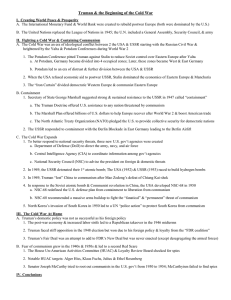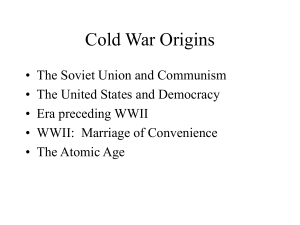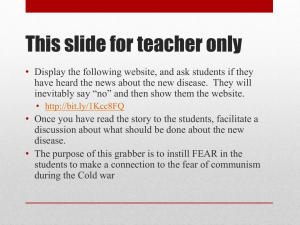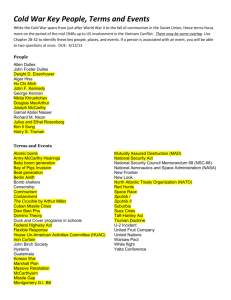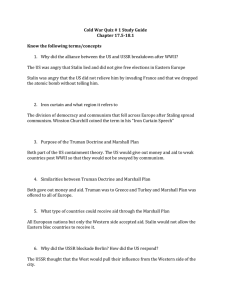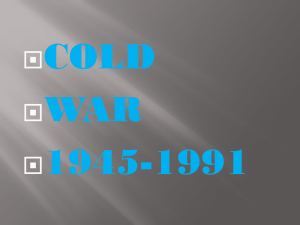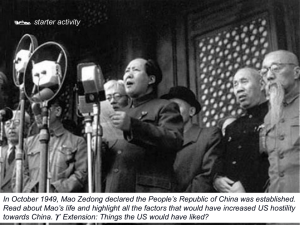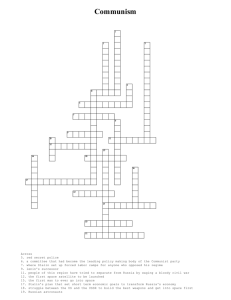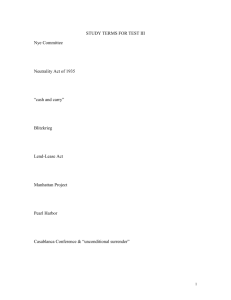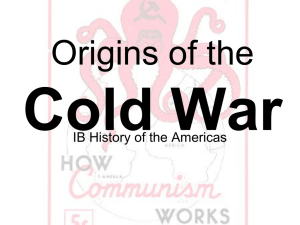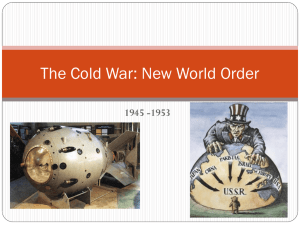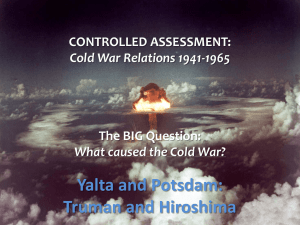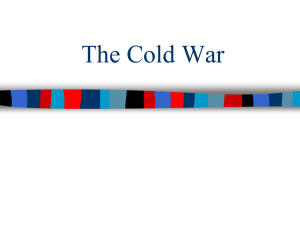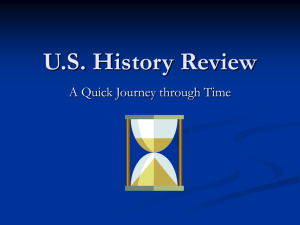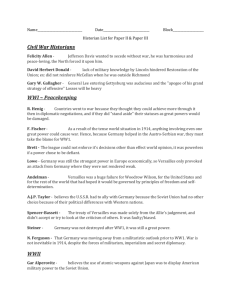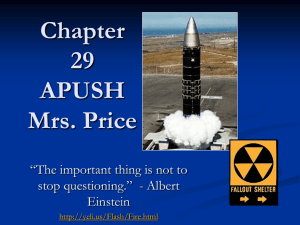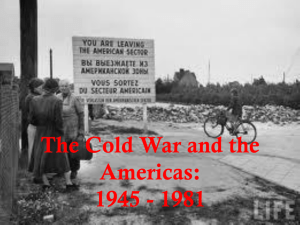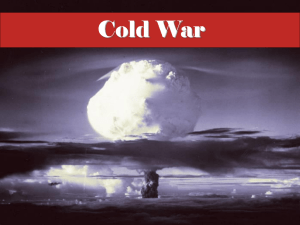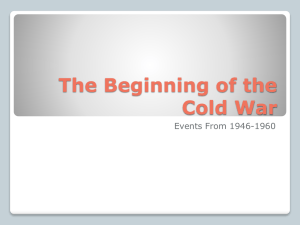Baggett
advertisement
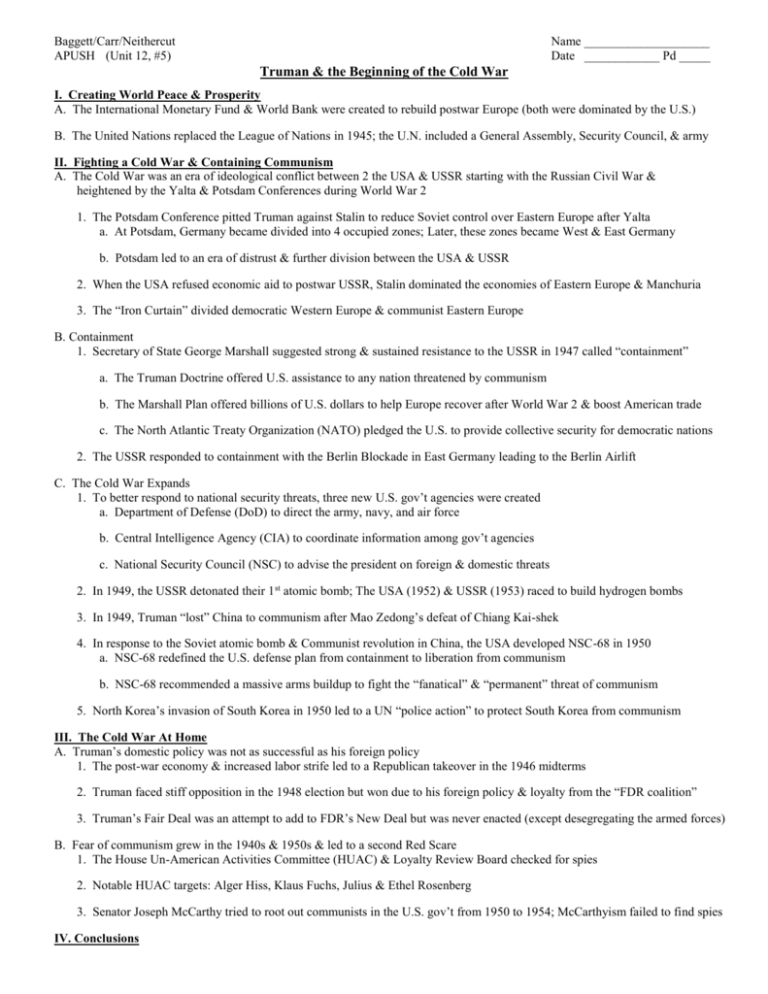
Baggett/Carr/Neithercut APUSH (Unit 12, #5) Name ____________________ Date ____________ Pd _____ Truman & the Beginning of the Cold War I. Creating World Peace & Prosperity A. The International Monetary Fund & World Bank were created to rebuild postwar Europe (both were dominated by the U.S.) B. The United Nations replaced the League of Nations in 1945; the U.N. included a General Assembly, Security Council, & army II. Fighting a Cold War & Containing Communism A. The Cold War was an era of ideological conflict between 2 the USA & USSR starting with the Russian Civil War & heightened by the Yalta & Potsdam Conferences during World War 2 1. The Potsdam Conference pitted Truman against Stalin to reduce Soviet control over Eastern Europe after Yalta a. At Potsdam, Germany became divided into 4 occupied zones; Later, these zones became West & East Germany b. Potsdam led to an era of distrust & further division between the USA & USSR 2. When the USA refused economic aid to postwar USSR, Stalin dominated the economies of Eastern Europe & Manchuria 3. The “Iron Curtain” divided democratic Western Europe & communist Eastern Europe B. Containment 1. Secretary of State George Marshall suggested strong & sustained resistance to the USSR in 1947 called “containment” a. The Truman Doctrine offered U.S. assistance to any nation threatened by communism b. The Marshall Plan offered billions of U.S. dollars to help Europe recover after World War 2 & boost American trade c. The North Atlantic Treaty Organization (NATO) pledged the U.S. to provide collective security for democratic nations 2. The USSR responded to containment with the Berlin Blockade in East Germany leading to the Berlin Airlift C. The Cold War Expands 1. To better respond to national security threats, three new U.S. gov’t agencies were created a. Department of Defense (DoD) to direct the army, navy, and air force b. Central Intelligence Agency (CIA) to coordinate information among gov’t agencies c. National Security Council (NSC) to advise the president on foreign & domestic threats 2. In 1949, the USSR detonated their 1 st atomic bomb; The USA (1952) & USSR (1953) raced to build hydrogen bombs 3. In 1949, Truman “lost” China to communism after Mao Zedong’s defeat of Chiang Kai-shek 4. In response to the Soviet atomic bomb & Communist revolution in China, the USA developed NSC-68 in 1950 a. NSC-68 redefined the U.S. defense plan from containment to liberation from communism b. NSC-68 recommended a massive arms buildup to fight the “fanatical” & “permanent” threat of communism 5. North Korea’s invasion of South Korea in 1950 led to a UN “police action” to protect South Korea from communism III. The Cold War At Home A. Truman’s domestic policy was not as successful as his foreign policy 1. The post-war economy & increased labor strife led to a Republican takeover in the 1946 midterms 2. Truman faced stiff opposition in the 1948 election but won due to his foreign policy & loyalty from the “FDR coalition” 3. Truman’s Fair Deal was an attempt to add to FDR’s New Deal but was never enacted (except desegregating the armed forces) B. Fear of communism grew in the 1940s & 1950s & led to a second Red Scare 1. The House Un-American Activities Committee (HUAC) & Loyalty Review Board checked for spies 2. Notable HUAC targets: Alger Hiss, Klaus Fuchs, Julius & Ethel Rosenberg 3. Senator Joseph McCarthy tried to root out communists in the U.S. gov’t from 1950 to 1954; McCarthyism failed to find spies IV. Conclusions
